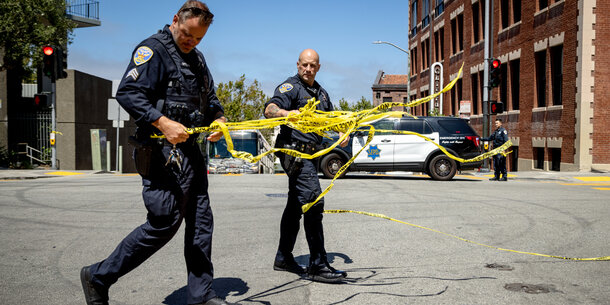Correctional institutions — prisons and jails — are considered closed facilities. Few visitors gain access to these institutions, even though they house people for months, years, decades, and, sometimes, entire lifetimes. As Justice Kennedy wrote in his 2015 concurrence to the Court’s opinion in Davis v. Ayala, “Prisoners are shut away—out of sight, out of mind,” while their conditions of confinement are “too easily ignored” by the public and the legal academy.
These institutions are also coercive environments with marked power differentials between corrections staff and incarcerated people that make facilities ripe for abuse. Because jails and prisons exert total authority over individuals’ bodies and liberty, transparency and accountability are necessary to ensure that facilities uphold their duty of care to respect the dignity of people who are imprisoned and ensure that prisons are safe and secure.
One way to achieve the goals of transparency and accountability, while ensuring safe and humane conditions of confinement, is a formal and independent system of oversight of jail and prison operations. As the Brennan Center has noted before, although the U.S. has more people behind bars than any other country on the planet, “it lacks a cohesive or integrated system of oversight for its vast network of prisons and jails.”
The country currently has about 18 entities overseeing prisons, such as the Correctional Association of New York, the John Howard Association in Illinois, and the Pennsylvania Prison Society. There are also a number of independent agencies that conduct prison oversight housed within the executive branch of state governments, such as the Office of the Inspector General in California. Additionally, a handful of independent entities oversee local jails, such as the New York City Board of Corrections and the Texas Commission on Jail Standards. Meanwhile, most state prisons — through their own internal accountability mechanisms — rely on monitors who work for the very state correctional agencies that manage these facilities. The inherent problem in this setup is that such internal accountability mechanisms lack independence.
This patchwork of oversight provides insufficient coverage. And the public health crisis resulting from the highly contagious and deadly Covid-19 virus has shone a spotlight on the prevalence of inhumane conditions of confinement in America’s correctional facilities. These conditions predated the pandemic but worsened in many jails and prisons after March 2020.
Even before Covid-19 infiltrated their walls, jails and prisons across the country had already been deemed inhumane places to live. For example, in June of 2019, Mississippi’s State Health Department issued a report finding that the Mississippi State Penitentiary had dozens of broken or missing sinks and toilets and cells with no lights, hot water, or mattresses.
But the pandemic adds a new — and deadly — layer. Given the inability to social distance behind bars, the constant turnover in jails, lack of masks, and the inability to wash one’s hands frequently, it has been difficult for incarcerated people to avoid contracting Covid-19. Although these counts are likely underestimates, at least 3,059 incarcerated people and 308 correctional staff have died from Covid-19, and over 592,148 incarcerated people have contracted the virus. The situation has only been exacerbated by the lack of transparency about the spread, toll, and management of Covid-19 across the country’s thousands of correctional and detention facilities.
Many facilities have devolved into crisis since March 2020, as correctional officers called out sick or quit their jobs. Many of them worry about their own health as Covid-19 continues its persistent transmission within jails and prisons. And the outflow of staff is stark. For example, the vacancy rate for correctional officer positions in Florida’s prisons nearly doubled from December 2019 to September 2021.
This severe understaffing has exacerbated already dire conditions. In 2021 alone, 16 people died in the custody of New York City’s jail system. The city’s chief medical officer at Rikers Island even acknowledged that “in 2021, we have witnessed a collapse in basic jail operations, such that today I do not believe the City is capable of safely managing the custody of those it is charged with incarcerating in its jails, nor maintaining the safety of those who work there.”
In Philadelphia’s jails, 18 people died* in 2021, and the city’s controller found that the facilities are continuously operating 382 officers below the minimum level deemed safe for staff and detained people alike. In yet another pandemic-era disaster, the jail facility in Washington, D.C., entered a 23-hour-a-day lockdown in March 2020. It lasted for about 400 days straight and left the 1,500 people held there suffering from what experts referred to as “mass solitary confinement” and “a grave human rights abuse.” Last summer, the lockdown was loosened — to 22 hours per day.
Inhumane conditions of confinement in America’s prisons and jails continue to persist, and the nation is in dire need of more preventative and independent correctional oversight to rein these abuses in. This resource explores the landscape of prison and jail oversight reform since 2018. It highlights both progress in strengthening correctional oversight and failed attempts to improve monitoring of conditions inside these institutions.




